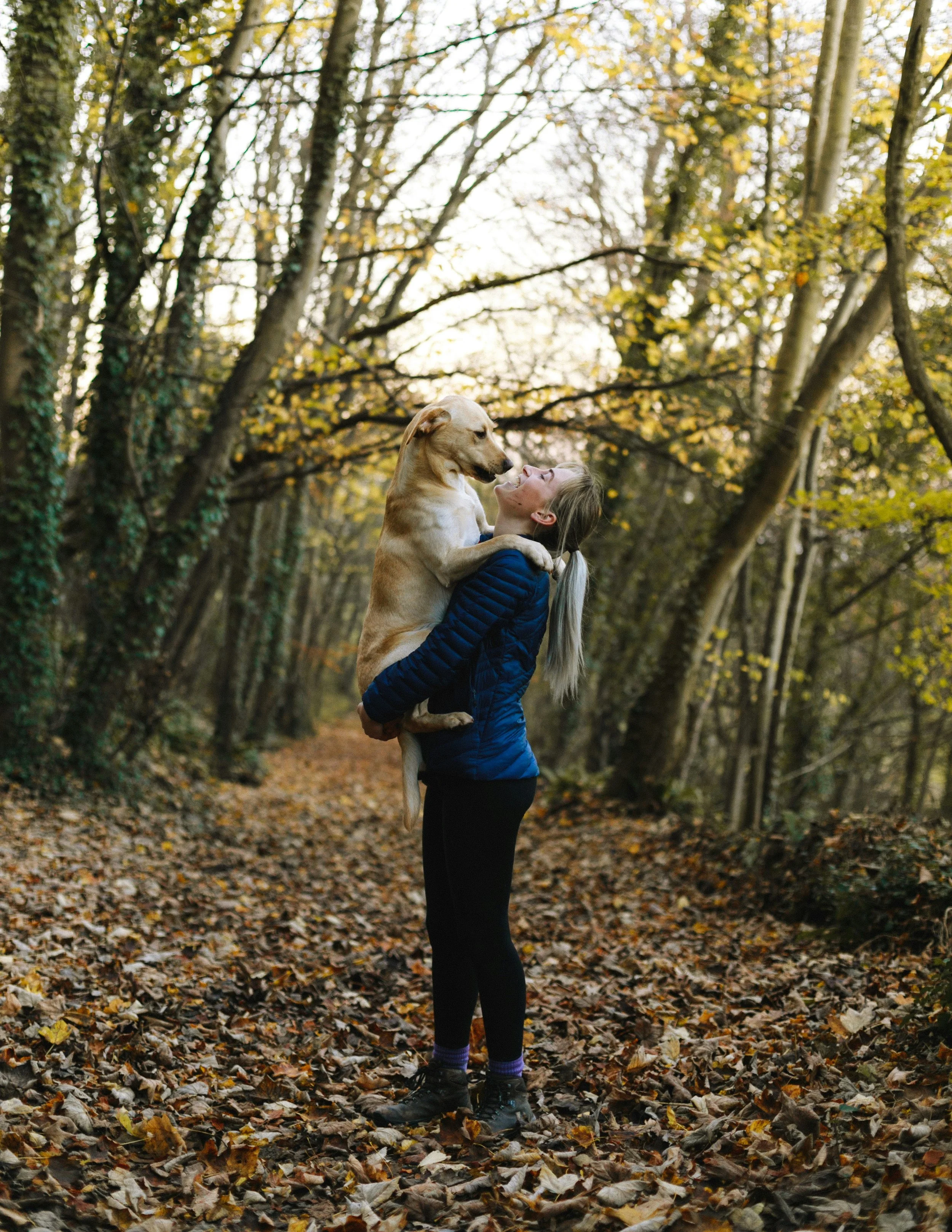7 Tips for a Fun and Healthy Fall Season with Your Pets
As the crisp air rolls in and the leaves begin to turn vibrant shades of red, orange, and gold, autumn brings a refreshing change for both people and their pets. For dog owners, fall is an especially magical time. The cooler temperatures make outdoor adventures more pleasant, from long walks through the woods to weekend hikes along the Deschutes River where the vibrant foliage sets the perfect backdrop. For many dogs, autumn is a time to revel in the cooler air, excitedly sniffing new scents in the wind and bounding through piles of fallen leaves.
As the days get shorter, pet owners find themselves spending more time indoors, often in the kitchen preparing comforting seasonal dishes. Dogs and cats alike tend to linger near the kitchen, noses twitching at the aromas of home-cooked meals. With more time spent cooking, pets are hopeful for a dropped morsel or two. From simmering stews to freshly baked pies, they’re right at your feet, eyes wide and hopeful for a little taste of whatever’s on the menu. And let’s be honest—it’s hard to resist those pleading eyes!
But while fall is full of delights for both pets and their owners, the change in season also brings potential hazards. From toxic foods to cold-weather dangers, it’s essential to be aware of how to keep your furry companions safe and healthy during this time of year.
Autumn Hazards to Watch Out For
While your pet may be thriving in the brisk air and enjoying the extra kitchen activity, fall also brings some hidden dangers that every pet owner should be mindful of. Here are some of the most common seasonal risks and how to protect your pets:
1. Toxic Seasonal Foods
As holiday feasts approach, it’s important to remember that many human foods are toxic to pets. Foods like chocolate, often found in Halloween treats and baked goods, contain theobromine, which can be deadly to both dogs and cats. Similarly, grapes and raisins, common in fall desserts, can cause kidney failure in dogs. Onions and garlic, found in many savory dishes, are toxic to both dogs and cats, leading to anemia by damaging their red blood cells. Additionally, nutmeg, often used in holiday desserts and spiced drinks, contains myristicin, which can cause disorientation, hallucinations, and seizures in pets if ingested. Keep an eye on what your pets have access to, and make sure leftovers, snacks, and spices are stored out of reach.
2. Antifreeze and Other Chemicals
As the weather gets colder, many people begin using antifreeze in their vehicles. Antifreeze contains ethylene glycol, which is highly toxic to pets. Even small amounts can cause kidney failure and death. The problem is that it has a sweet taste that attracts animals. Be sure to clean up any spills immediately and store chemicals securely out of reach.
3. Cold Weather Exposure
While the cooler temperatures are a welcome relief from summer heat, pets—especially smaller breeds, older animals, or those with thin coats—are still vulnerable to the cold. Monitor outdoor exposure and make sure your pets are dressed warmly, especially for longer walks or hikes. Consider investing in a cozy sweater or jacket for your dog, and always provide a warm place indoors for them to rest.
4. Decorations and Holiday Hazards
As Halloween and the holiday season approach, many homes are filled with festive decorations. While they may make your home feel more seasonal, holiday decorations can pose risks to curious pets. Candles, string lights, and small decorations can all be hazardous. Make sure candles are placed out of reach, and be mindful of electrical cords that pets may chew on. Keep small ornaments and decorations away from areas where your pets might try to play with or swallow them.
5. Increased Traffic and Guests
Fall often brings more guests and deliveries, especially as the holidays near. With doors opening and closing frequently, there’s a higher chance of pets slipping out. Prepare for increased traffic in your home by ensuring your pets have a quiet space to retreat to if they become overwhelmed. Make sure your pets are wearing up-to-date ID tags and that their microchip information is current in case they do manage to slip out unnoticed.
6. Seasonal Plants and Mushrooms
While fall foliage is beautiful, certain seasonal plants and mushrooms that appear in cooler, damp conditions can be toxic if ingested by pets. Watch out for mushrooms during walks or hikes, and avoid allowing your dog to chew on unfamiliar plants or foliage.
7. Rodenticides and Pest Control Products
As temperatures drop, rodents seek shelter indoors, leading many people to use rodenticides or pest control products. However, these substances can be highly toxic to pets if ingested. Store these products securely and consider pet-safe alternatives when dealing with pests.
Keeping Your Pets Safe and Healthy This Fall
Fall is a wonderful time of year to enjoy with your pets, but it’s important to stay vigilant about the potential hazards. By being aware of these seasonal risks, you can help ensure that your pets stay safe and healthy throughout the season.
If you have any concerns about your pet’s health or want to schedule a preventive health check, give us a call at High Desert Veterinary Clinic. Our team is here to help ensure your pets enjoy the best of the season—safely!

